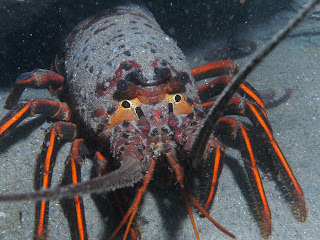HIGH SPRINGS, FL – GUE PRESS RELEASE: For Immediate Release
Global Underwater Explorers (GUE) is pleased to announce a new, continuing education course to supplement its superior form of underwater training. DIR Dry-land Fundamentals is designed to give students the best, safest, experience when on dry land.
The concept is to train individuals so that their experience on land is as safe an enjoyable as possible. The DIR Dry-land Fundamentals takes many ideas and practices from DIR diving and develops them for use on dry land.
The DIR philosophy is based on uniform, highly optimized, equipment, detailed planning, and a team approach to actions. It has many followers and practitioners because of its strict training regimens and ability to achieve results. It is based on the early dive teachings of DICK, or “Doing it Correctly, Kind-of.” One could say that DIR divers are a direct offshoot of DICK divers.
Below are excerpts from GUE training manuals that give a rough outline of what Dry-land Fundamentals will involve.
*Excerpt*
ATTIRE and GROOMING:
- All body hair must be removed, so as not to be an entanglement hazard. Large ears, outtie bellybuttons, weird looking protruding moles, and other deformities must also be removed to reduce the risk of entanglement.
 |
| Non-DIR footwear. You might as well be wearing high heels. |
- Shoes must be high tops: high top shoes offer more ankle support, and reduce the chance of failure due to suffering a “flat tire” should someone accidentally step on the back of your shoe. Flip flops are not allowed, as they are the Split-Fin of footwear, and prevent the user from executing proper walking motions or running. Shoelaces are a common failure point, and should be replaced with springs.
- Tip-toeing is a superior way of walking, as it allows for quieter movement and stirs up less silt.
- Socks should be of the heelless, tube sock, variety. This gives the team uniformity, should one buddy need to donate socks to an OOS (out of socks) buddy.
- Underwear must be briefs—no boxer shorts allowed. Boxer shorts do not offer enough support, and often allow the testicles to dangle, presenting an entanglement hazard.
- No wife-beater style undershirts: they make you look like a tool.
- All students will wear one piece, black, mechanic style jumpsuits. Building off the concept of the one-piece HOG harness, there are fewer failure points in a one-piece jumpsuit.
- Headwear will consist of knit beanies, with no pom-poms on top since they are an entanglement hazard.
EQUIPTMENT
- One time keeping device, worn on the right wrist. It will be used to…uh…tell people what time it is.
- Cell phone, inside the left front pocket, and attached to a bungee loop inside of the pocket with a boltsnap and caveline. Cell phones will not be worn in waist holsters, because it is an entanglement hazard, and again, makes you look like a complete tool.
- Keys will be kept in the right front pocket, attached with caveline and a boltsnap.
- A roll of caveline and extra boltsnaps will be kept in the right back pocket, secured by another boltsnap attached by caveline.
- Back up caveline will be secured around the neck by a bungee necklace.
PROCEDURES
- When ascending beyond ground level, students will start their stops at half their planned height, and then do one minute stops at each invterval before reaching their pre-determined height.
**For example, if the team plans to go from the first floor of a house to the second floor, and there are 14 steps in the flight of stairs, they would climb until to the 7th step, and then stop for one minute at each additional step before reaching the second floor.
**If team members were staying in a hotel, and their room was on the 20th floor, they would take the elevator to the 10th floor, and stop for one minute at each additional floor before arriving at their room on the 20th floor.
- The DIR philosophy incorporates planning and buddy checks on everything: each member of the team is responsible for double-checking the actions of the other members. For example, if one team member were to ask if his breath stank, each team member must smell his breath to verify weather or not it reeks of dog fart.
- Every visit to the restroom must be in teams, to support the team member who needs to take a crap. While one buddy prepares to unleash a grunt sculpture, the other buddy can verify the correct positioning of the ass-gasket and make sure the toilet paper supply has not exceeded “min-TP” requirements.
- After each visit to the commode, each team member is responsible for verifying that the turd is properly flushed.
COURSE REQUIREMENTS
 |
| The DIR way of opening a beer: A boltsnap...with caveline, of course. |
To successfully complete the GUE DIR Dry-land Fundamentals course, students are required to:
- In proper DIR dry land gear, teams must tip-top 100 yards while conversing about what happened on the most recent episode of Dancing with the Stars.
- Teams must successfully use a public restroom, with each team member verifying all steps and necessary procedures before dropping the kids off at the pool.
- Donate caveline and a boltsnap to another team member...just because.
- Students must not get their testicles tangled in anything.
- Do a proper ascent with all the required stops…on an escalator at the mall.
- Safely ascend to the 30th floor of an office building.
- Team members will belittle others who have not taken Dry-land Fundamentals, and will incorporate the terms “Stroke,” “Weiner” and “Solo-Crapper” into their insults.
For a full list of requirements and course descriptions, visit www.gue.com, or email surfaceswim@gmail.com
- GUE Press Release, courtesy of the Surface Swim





